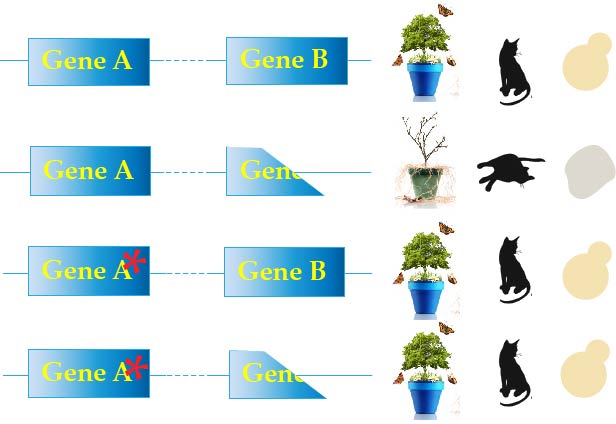or When One Mutation Saves Another
Cells are full of complex genetic networks, where genes interact with each other in ways that can be surprising. Synthetic viability is a particularly fascinating type of genetic interaction.

Normally, if a gene that is essential for life—let’s call it Gene B—is disrupted, the cell can’t survive. Losing Gene B leads to lethality, or cell death. But in some cases, if a second gene (Gene A) is also mutated, the cell can actually survive again. In other words, the harmful effect of losing Gene B is “rescued” by losing Gene A. This rescue effect is what scientists call synthetic viability.
If the problem being fixed isn’t death but some other defect—like abnormal growth, sensitivity to stress, or faulty cell division—the phenomenon is sometimes called synthetic rescue instead.
Why is this important? Because synthetic viability helps reveal the hidden backup circuits inside cells. Just like a city might have backup generators that kick in when the power grid fails, cells often have alternative genetic pathways that can compensate when something goes wrong. By studying which mutations rescue which defects, scientists can map out these backup systems and better understand how cells maintain stability.
This concept is especially powerful in the context of drug research. Imagine that Gene B only becomes “essential” when a cell is treated with a particular drug. If mutating Gene A allows the cell to survive even in the presence of that drug, researchers can learn two valuable things:
What the drug is targeting (since Gene B’s importance depends on the drug), and
How cells might evolve resistance (by switching on or off backup pathways involving genes like A).
In other words, synthetic viability isn’t just a quirky genetic trick—it’s a window into how cells protect themselves, how drugs work, and how resistance develops. Understanding these interactions can guide the design of new therapies and help predict how cells, including cancer cells or pathogens, might adapt under treatment.
One thought on “Synthetic Viability”
Comments are closed.